After six months on the Nukeproof Mega 290, it’s time for Rob to say goodbye to it. Will there be tears of sadness or joy to see the back of it?
I’ve become a fan of the Nukeproof Mega, having first tested the 275 Comp last year. And what a bike it was. A solid, long travel offering from Nukeproof built on enduro-ready geometry and available in spec kits that would fit a wide range of riders and purse sizes. For 2017, Nukeproof launched a newly updated range of Megas, which included this, the 290 Race. Sitting at the bottom of the pile when it comes to spec, the 290 Race holds the fort firm from the base. Just because it’s at the bottom of the spec sheet though, doesn’t mean it’s not a high performance machine. This certainly is a good bike, and one that I’ve fallen in love with since it turned up.


Let’s take it back a notch first. Nukeproof is a name we’re all pretty used to seeing, hearing and reading now, especially after the huge success of Sam Hill and the EWS team this year. It’s pretty easy to say that the brand seems to keep on growing and growing. It wasn’t always that way though, and the brand that we now recognise and respect hasn’t always had an easy ride. In 1990, the brand Nukeproof Industries was established, which set out to design and create ‘innovative and reliable solutions’ for the mountain biking industry. Back then, it had a solid reputation within the industry working with a range of materials on a bunch of different projects, and was best known for its carbon/aluminium hubs. When the bike industry took a bit of a decline after the huge American bicycle boom though, Nukeproof Industries struggled to stay afloat and slowly drifted off the radar. A sad story indeed…
…that was however until 2004 when Irish downhill racer Michael Cowan saw the chance to pick Nukeproof up, and get it back on its feet. With the initial product line launching in 2007, we’ve seen a load of different products come out of the Irish-based brand since, and the foot definitely isn’t being lifted off the gas just yet, especially with the recent release of the hotly anticipated Mega 275 Carbon.
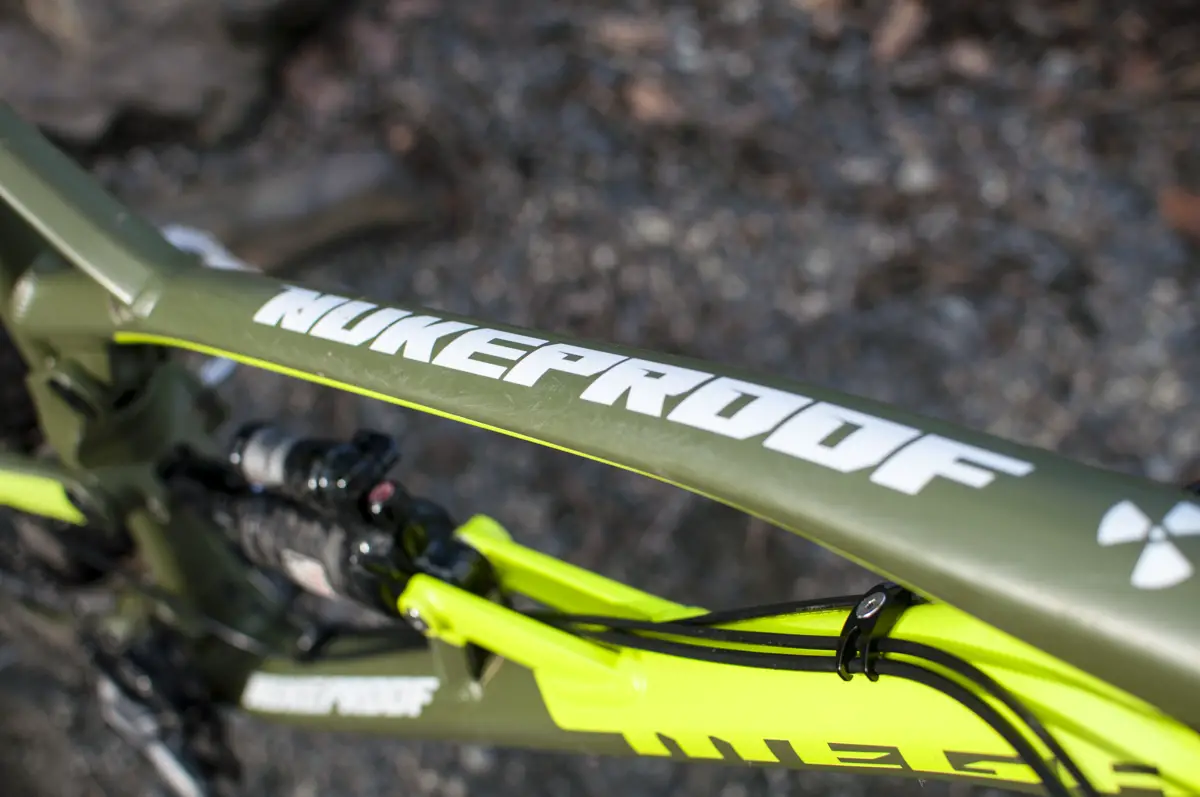
Looking to see how the 29er Mega stacks up against the 27.5in version, I’ve been testing the 2017 Mega 290 Race, which features 150mm of travel at each end and big 29in wheels wrapped with WTB Vigilante tyres. Partway through the test period, Nukeproof launched its 2018 range, where the 290 Race has been replaced with the Comp. Compared to the bike I’ve been testing, the 2018 frames have an updated spec list, as well as some subtle changes to the frame including a move to Boost hub spacing and Metric rear shock sizing. Otherwise the 2017 model shares an identical frame silhouette with the same angles and the same chainstay length.
The Bike
In a line-up of three spec options, the Race sits below the Comp and Pro. The frame is a full alloy construction, with tidy welds and a great overall aesthetic. Clean lines, well designed tubing and appropriately used graphics and colours give the Mega a solid appearance. This green colour pops!

The Mega uses fully external cable routing, until you get down to the seat tube, where stealth routing is used for the dropper post. Two little clips used on the down tube hold all cables in place, but getting into the bolts to loosen them is a touch awkward. The cables run nicely through the shock mount and sit tight with the frame to give a nice clean aesthetic. A sweet rubber chainstay protector comes as standard on the Mega, while neat dropouts sit flush into the frame to keep things looking tidy.

On Megas of new, the suspension is driven by a Horst-link design, which uses a pivot down at the rear axle, rather than the old single pivot design on older Mega models. This has obviously altered the position of the shock, which is now bolted to the downtube, and allows for a beautifully sweepy top tube to give the Mega a distinctive silhouette.
While we’re on suspension design and all things bounce, the Mega 290 runs 150mm of travel at both ends. On this spec, we’ve got a Rockshox Yari RC 29 out front, providing a solid and stiff chassis, with plush travel to soak up all the trails you can throw at it. At the rear there’s the Monarch Plus, with three stages of damping and adjustable rebound.


Numbers on the Mega 290 Race are as up to date and relevant as you’d expect. You’ll find a neat 44-56mm tapered headtube that’s fixed into a trendy 66° head angle, which pushes that front wheel out at a comfortable distance. The seat angle is a steep 75.5° to keep climbing abilities as high as possible. With 450mm chain stays, the Mega doesn’t have the shortest rear centre available on a 29er, but those extra few millimetres do increase the bike’s sense of stability. Even with the big wheels though, there is certainly no discrepancy in agility. Unlike the recently-released 2018 model, rear axle spacing on this bike is non-boost 142x12mm.
Wheels on the 290 Race come from WTB and Novatec, with WTB providing the STp i25 rims with (as you’d imagine from the name) 25mm internal rim width and a claimed raw rim weight of 597g. These are then laced onto Novatec D77SB hubs.


Nukeproof supplies a lot of the finishing kit, including the excellent 760mm Warhead bar and 50mm stem. Nukeproof is also in charge of seating, with its Trail saddle adorning a Brand-X Ascend dropper post. Having tested and reviewed the Ascend dropper post already, we believe it’s made a great addition to the spec sheet.
Raw weight on the Mega 290 Race (minus the pedals) comes in at an indulgent, however not majorly overweight 14.66 kg / 32.50 lb.
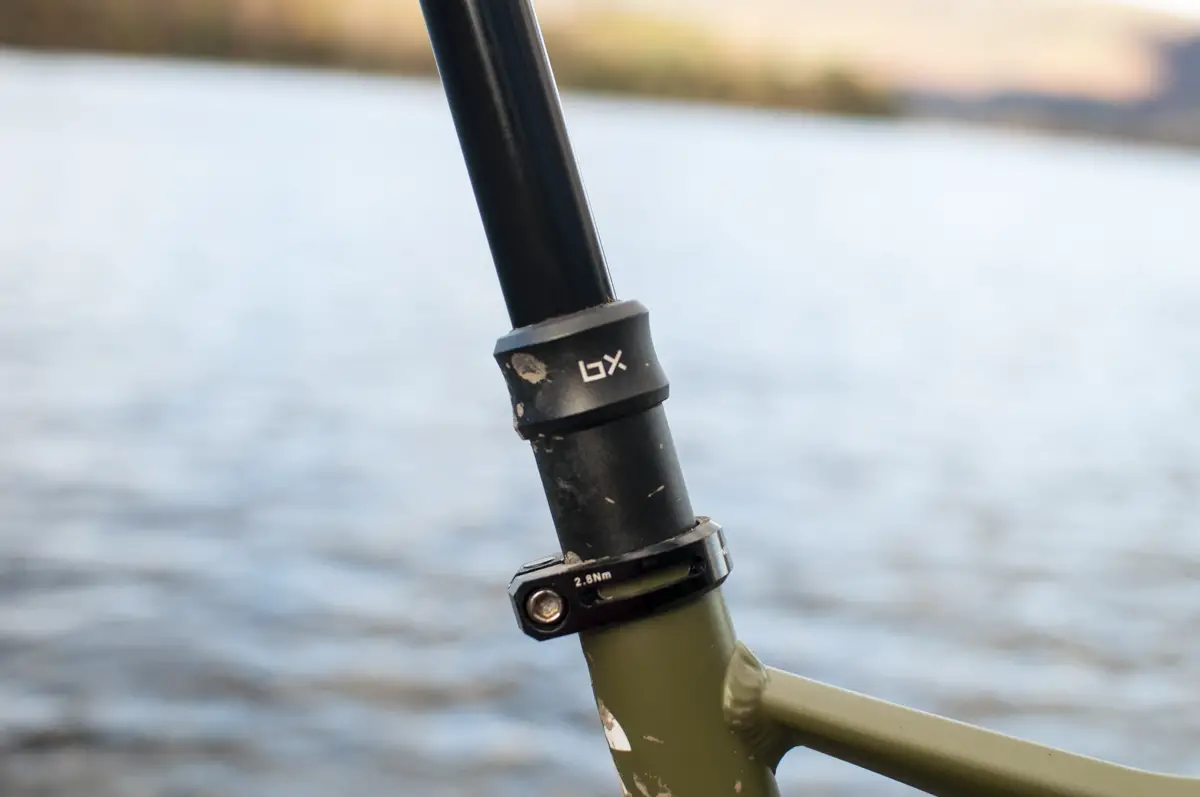

The Ride
We’ve got a large Mega on test here, and for me the sizing is spot on. I’m just over 6ft 1in, and the bike sits comfortably, whether it be descending, climbing or just pottering about. The 460mm reach on the large feels plenty comfortable and stable for me, though I would like it to be a fraction longer. The good news? The 2018 version has opened up the reach measurement on the bigger frame sizes, with the large growing to 470mm, and the X-Large stretching to 515mm (though reach remains at 410mm on the small and 435mm on the medium).
Out of the box the bars do feel a touch tall, though dropping the stem down a couple of spacers has made it more natural to get more weight over the front of the bike on the steeper trails. The 760mm wide Warhead bars themselves are comfortable and feel solid, but the 800mm bar width that’s spec’d on the 2018 Mega would surely bring just that extra bit of control and balance when the trails do get more technical.

As expected, the RockShox Yari fork has performed incredibly well, providing a stiff chassis that offers plenty of feedback to the rider. The tooled thru-axle is clean, though it does create an extra bit of a faff when transporting the bike in the car. Personally I’d prefer the regular Maxle for ease of use. Speaking of ease of use, the Motion Control damper offers a single compression dial at the crown to adjust between full open and fully locked, though at higher speeds on rough trails, the damper does start to struggle a touch. I am comparing it to the excellent Lyrik fork (the pricier version of the Yari) though, and the difference really is only apparent when you’re starting to push the bike much harder. The Yari came with two bottomless tokens installed already, though after dialling in spring pressure, I haven’t had to touch the set up all throughout testing, with the fork running smooth and supple.

When pedalling, the bike sits comfortably into its travel. With my history of riding hardtails, I’m a fan of a slightly firmer suspension set up, so slamming the Monarch Plus into its middle setting has been my preference. With the slightly longer back end on the Mega, the bike feels comfortable spinning along as an all day bike. Traction is delivered by the bucketload, and when getting out of the saddle and cranking along, the stability of this bike is admirable. I’ve encountered minimal pedal strike over the test period, even when riding more technical steps sections of trail, or when I’ve tried to be intentionally awkward with my pedal revolutions.

On the climbs the long chassis feels comfortable. There’s a noticeable amount of bob from the rear shock, but not enough for it to become annoying or affect the way you ride. When you’re climbing in the saddle, the bike sits tall and puts you in a good comfortable position, ideal for prolonged climbs. The longer the climb though, the more you’ll notice that 14+kg weight. My advice? Stay seated and lock in a low climbing gear, and the Mega will winch its way to the top of most ascents.
Getting the Mega out into the wild and playing on the trails was of course top of the to-do list. There are a few really tasty low speed traversing trails around ST HQ in Calder valley, and taking the Mega to these trails was a good little test. With the long wheel base and big wheels, I was interested to see how the bike would perform. On these slower speed, nadgery sections of trail, the bike tracks well and skips through and over rocks and roots with ease. On technical climbs over looser terrain, the back end can become a touch skitty. Again, remain seated and place your bodyweight a bit further back on the bike, and you can keep the rear tyre in check.

With the Mega being quite a big bike, you do feel like you sit high, especially when climbing. When it comes to descending though, the bike wants you to let off the brakes and charge. On rough straight-line sections, the bike just soaks up rocks and ruts like they aren’t there, and when it comes to hitting jumps or drops, just let loose and fly. Thanks to the long rear centre, transferring weight on the bike is incredibly easy, and although the bike is pretty big, once you’re up to speed, it carries that speed really, really well. On sweeping corners, the Mega sticks like shit to a blanket and it’s very much a point-and-shoot affair with the front end.
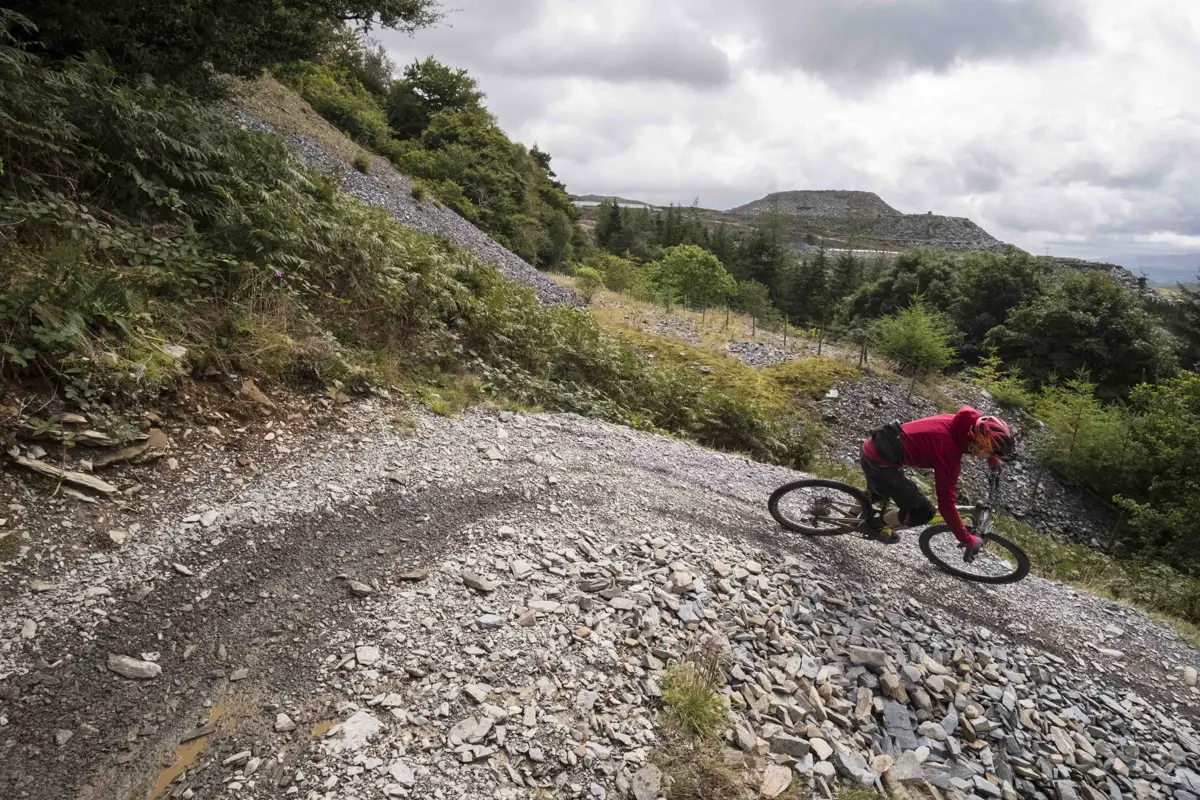
During a spot of brake testing down at Antur Stiniog for a magazine group test, the Mega provided us with a competent and reliable bike for doing run after run while swapping out brakes. The hard packed, fast and (in places) brutal terrain down at the Welsh trail centre gave the Mega a chance to really show what it was made of. The overall gist is that the rougher the trails get, the better this bike performs. The long wheelbase makes the bike incredibly stable at higher speeds, and the 29in wheels ensure the bike skips and bounces over rougher trail features. For the sections of trail that look less rideable, the Mega provides its pilot with sufficient confidence to leave terra firma and gap said firma wherever possible.
If you’ve read my review of the Mega 275, you’ll likely already have picked up how I’ve found the big wheeler in comparison. While both are highly capable rough-terrain bruisers, there’s no denying the 29er’s outright speed and control. It takes just a little more effort to get it moving, and it requires a bit more input when the corners get tighter. When it comes to cutting shapes, the smaller Mega 275 is easier to chuck around. But get a handle on the wagon wheels and just how much traction there is on tap, and chances are you’ll fly faster on the Mega 290.

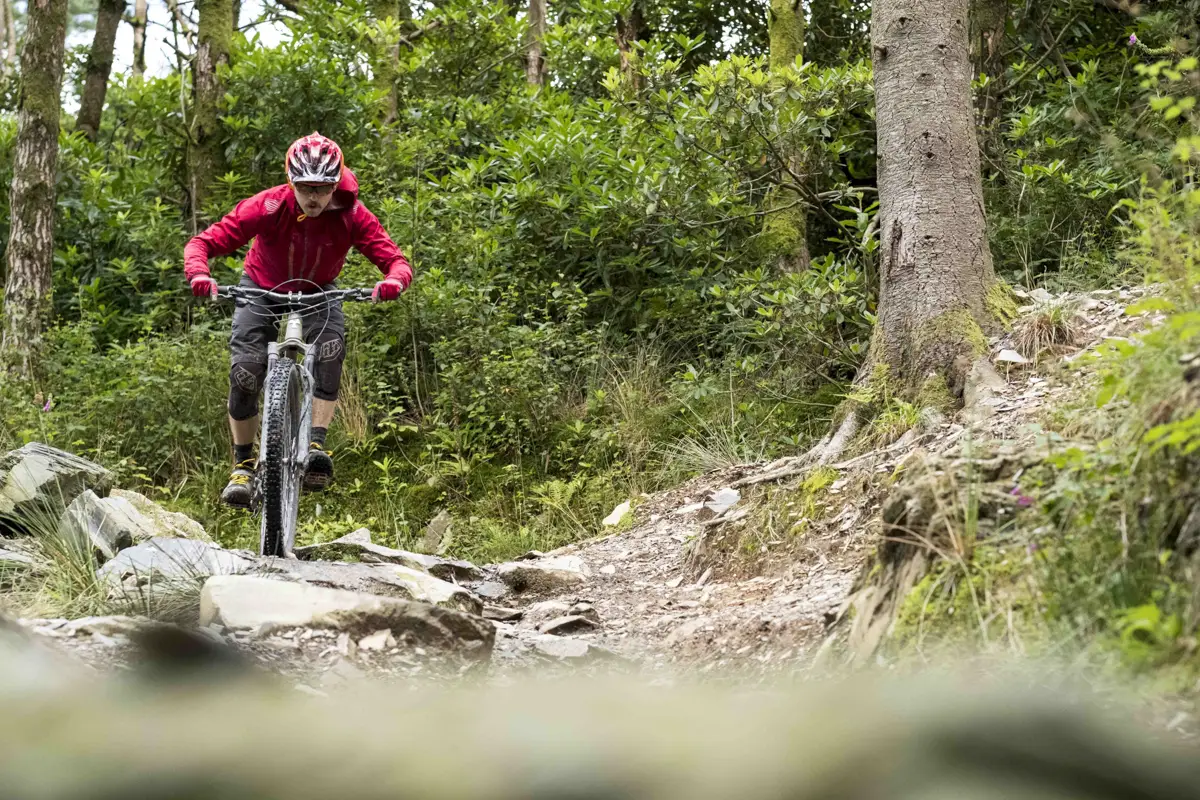
Durability Notes
When riding through some tighter and more technical sections of trail, the narrow rims do exhibit unwanted flex. Much of this is from the 25mm internal rim width, which means tyre roll from the 2.3in wide Vigilante was quite noticeable when loading up the bike through the turns. Increasing the tyre pressure of course helped to make the ride feel more solid, but the tradeoff was less grip, with the tyres wanting to slide more under harsh braking and enthusiastic cornering.
As evidence of my pursuit of the balancing act on rear tyre pressure, I did end up dinging the rear WTB rim quite badly. Even with a fold in the rear rim though, there has been no loss of pressure or burping of sealant at any time, which is impressive. That said, it’s worth noting that Nukeproof is spec’ing the 2018 Megas with burlier tyre casings and wider rims as standard.
Otherwise there were no major issues with frame or components to note. I did replace both the gear and dropper post cables, though that was largely due to neglect on my behalf following several very wet and muddy rides. The ding in the rear wheel was the only real issue I encountered, but with no consequences following, the strength of the wheels can be commended.

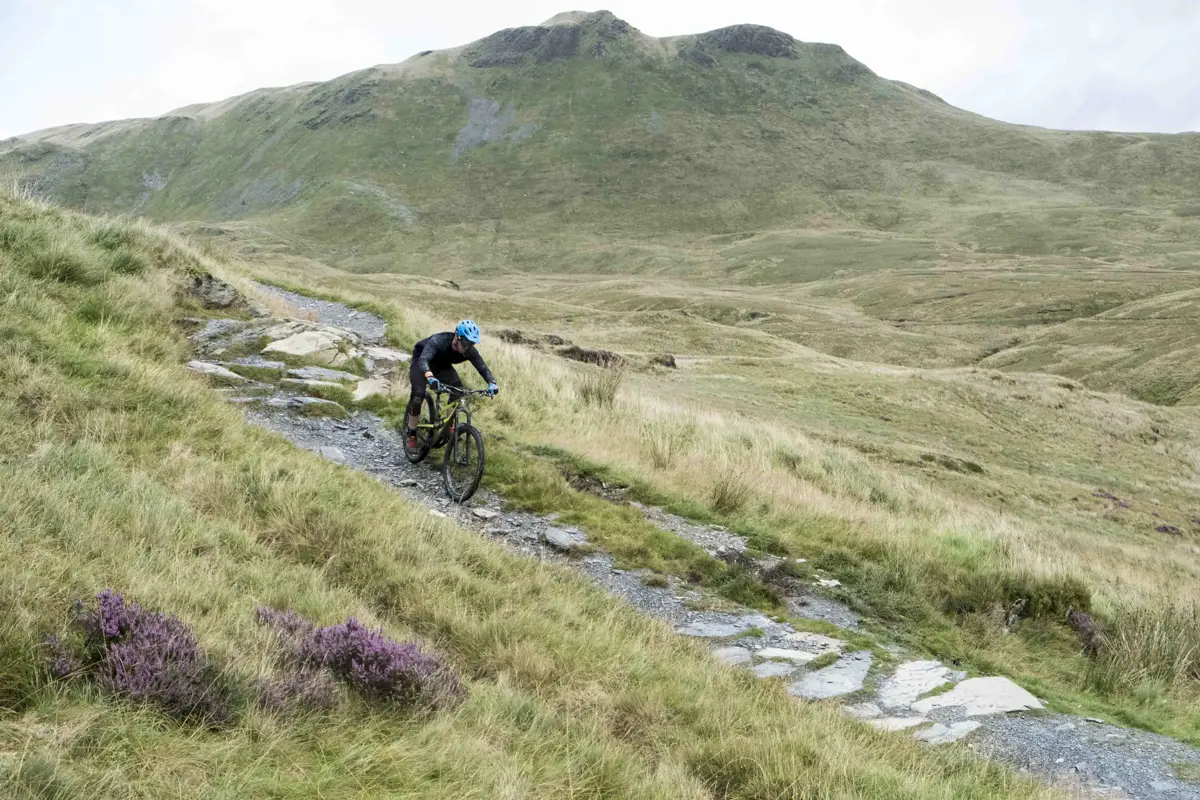
Three Things That Could Be Improved
- The rear bolt-up axle is a touch awkward and feels quite cheap in use
- The wheels on the 290 Race are too narrow. Wide rims please
- A reduction in weight would significantly boost the Mega 290 Race’s climbing abilities
Three Things That We Loved
- The Mega is such a solid and stable bike, you could happily ride it all day long
- Versatility – uphill, downhill, smooth or loose – the Mega handled every trail we could throw at it
- The on-point parts spec

Overall
After six months aboard the Mega 290 Race, I can confidently say I don’t want to give this bike back. It has been the first time I’ve had a prolonged period on a longer travel 29er, and in my strongest Leeds accent, it’s been ‘mega’.
The Mega’s climbing capabilities for such a big machine really surprised me, and on the descents, this thing rips. A split personality bike for sure, with a comfortable and calm riding style when you want, or an absolute pounder when you get it on rough trails and up to speed. If you’re the kind of rider that wants to put in the miles and cover big distances day after day, then it’s fair to say the Mega probably isn’t for you. But if you’re after a longer travel bike that’s capable of big days out, or uplift trail centres smashes, then you can’t go much wrong with this bike. The spec can be updated to your specific riding style or component preferences, but as it comes, this is one hell of a bike, and I’ll be sad to see it go.
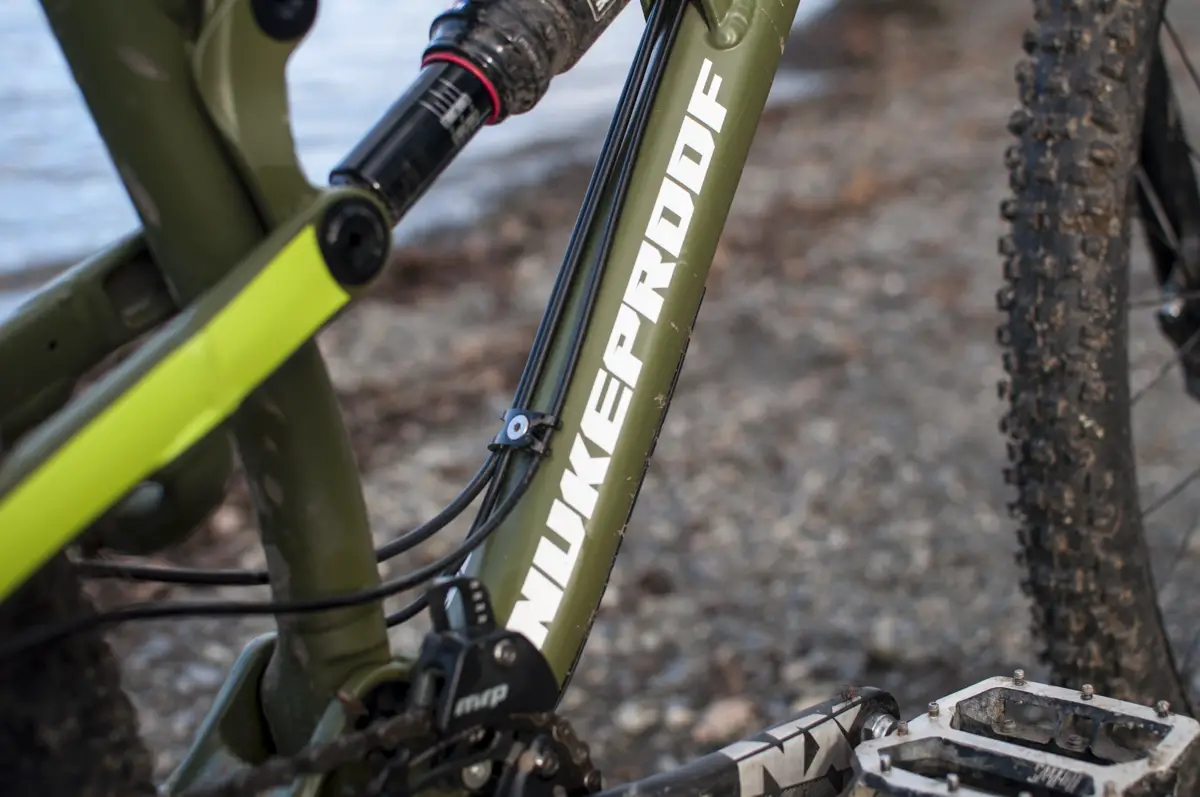
2017 Nukeproof Mega 290 Race Specifications
- Frame // Custom hydroformed T6 6061 aluminium
- Fork // Rockshox Yari RC 29″, Solo Air, 150mm, Diffusion Black, Maxle Stealth.
- Shock // Rockshox Monarch Plus +, 150mm travel
- Hubs // Novatec D77SB / 462, Black
- Rims // WTB STp i25, TCS, 29″ 32h
- Tyres // WTB Vigilante, 29×2.3in High Grip Front, WTB Trail Boss, 2.3 x 29″ rear
- Chainset // SRAM NX 170mm, 30t, Steel, Black
- Chain Device // MRP 1x V3, ISCG 05, 26-38t, Black
- Front Mech // N/A
- Rear Mech // SRAM NX-1 11spd, Black
- Shifters // SRAM NX 11spd, Black
- Cassette // SRAM PG1130, 11-42
- Brakes // Shimano Deore M615
- Stem // Nukeproof Warhead, 31.8mm, 50mm Long
- Bars // Nukeproof Warhead 760 Riser; 760mm wide, 20mm rise,
- Grips // Nukeproof Element Dual lock-on
- Seatpost // Brand X Ascend, 125mm, Trigger, Black
- Saddle // Nukeproof Trail Saddle, Black
- Size Tested // Large
- Sizes available // Small, Medium, Large, X-Large
- Weight // 14.66 kg / 32.50 lb






Eurgh that colour, eye of the beholder, etc but I’m not a fan.
Got my Mega 290 Comp 2018 XL last week.
Well specced for the money and – as mentioned – hasits addressed most (not all) niggly bits. Wider rims (30mm internal), Maxxis DD tyre casings, 800mm bars. Still has the annoying-but-neat fork axle, and positively (for me) full 1×11 SLX instead of SRAM. 120mm dropper is out of place so I’ve swapped it for the 150mm equivalent. Looking forward to first ride on it 🙂